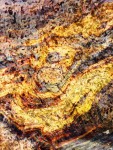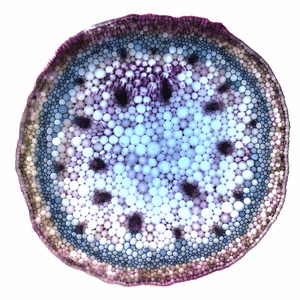Rob Kesseler – Response
After researching into Rob Kesseler’s work, I created a few of my own images in response to him. I used images of natural forms including the bark of trees, stumps and broken slate to create these images in Photoshop CS5.
I layered different parts of the subjects of my photos together and changed the ‘Hue/Saturation’, as well as increasing the ‘Contrast’ to create the effects shown above. I then cropped the images and refined them further, showing the hidden details in natural forms that one may not see at glancing distance.
The shapes present in the subjects of my work reflect the detail and structure in natural forms which may otherwise seem very simple to the naked eye. Although I was unable to look at individual cells at microscopic view, I was able to portray influence from Rob Kesseler by looking at natural forms at a closer view.





